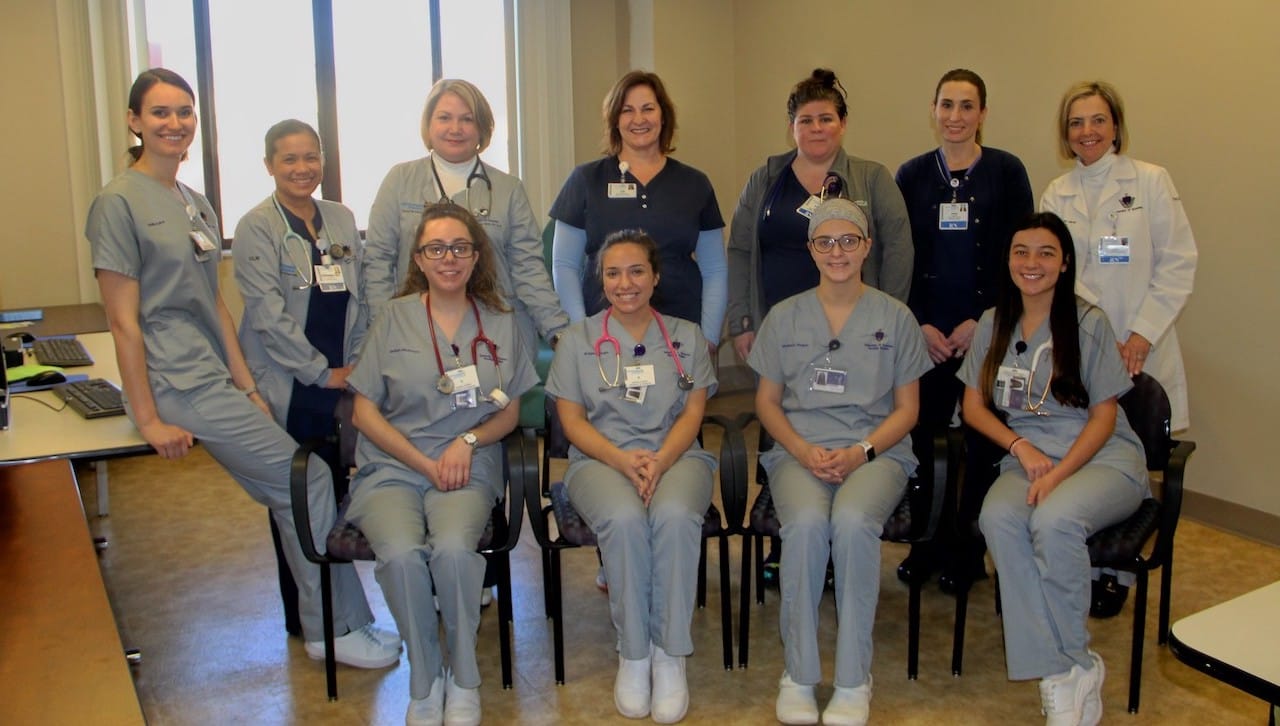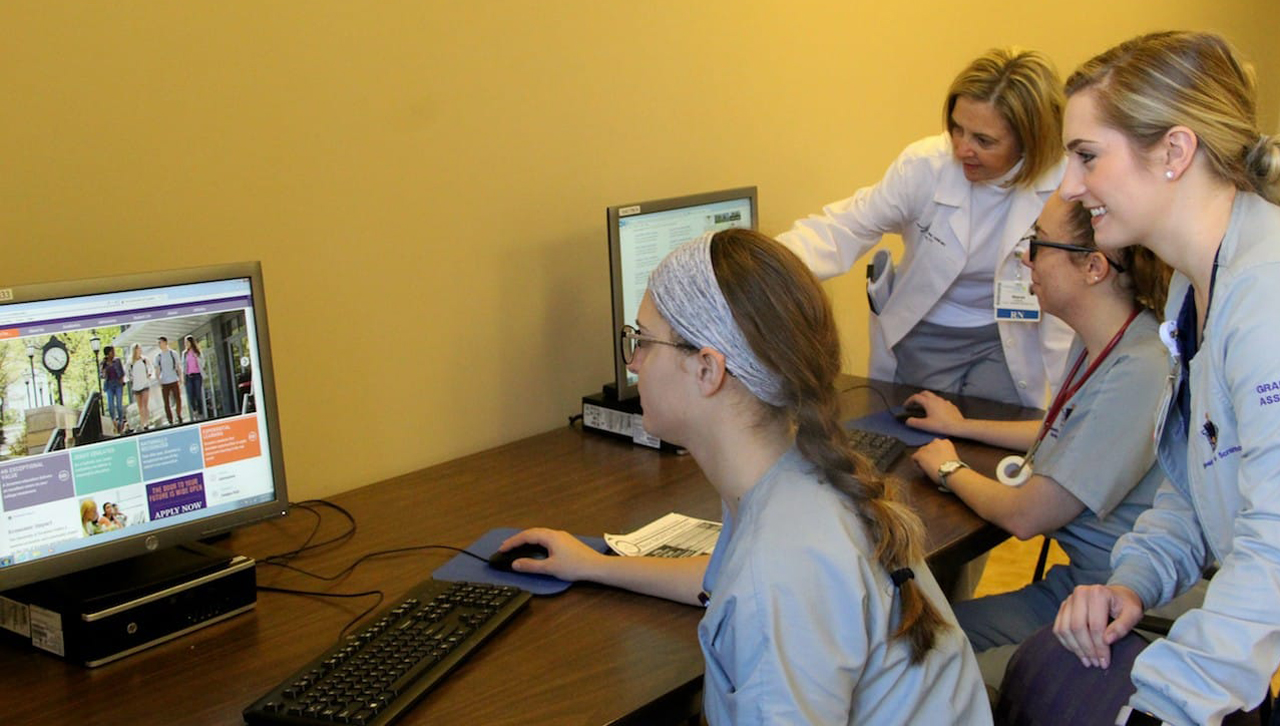Clinical Liaison Nurse Partnership at Regional

The University of Scranton’s ongoing Clinical Liaison Nurse Academic Practice Partnership was among the 16 projects that received support through the University’s Strategic Initiatives Funding Program for the 2018-19 academic year.
The Clinical Liaison Nurse Model, a community-based, academic-practice partnership the University began in 2009, pairs expert staff nurses with academic faculty to create an improved learning environment for undergraduate student nurses and an added level of safety for patients.
According to Sharon Hudacek, Ed.D., professor of nursing at the University, documented research indicates the clinical environment created by the model fosters the development of high-level critical thinking skills, moving the student nurses from novice to expert. With the assistance of highly qualified expert staff nurses, the clinical faculty members enhance the ability to challenge student nurses and to offer insight from additional clinical experience.
The University’s ongoing Clinical Liaison Nurse Model partners include Regional Hospital of Scranton, as well as Moses Taylor Hospital and Geisinger Community Medical Center.
The Strategic Initiatives Funding award will also support the upcoming Clinical Liaison Nurse Academic Practice Partnership lecture by Paul Feuerstadt, M.D., attending gastroenterologist and assistant clinical professor of medicine at Yale University. He will discuss “Ischemic Bowel Disorders” at lecture at the Geisinger Commonwealth School of Medicine on Thursday, April 11, at 4:30 p.m.
The University’s Strategic Initiatives Funding supports innovative projects, particularly those that that will have substantial, positive impact on the student experience, that advance the goals of its “Strategic Plan: an Engaged, Integrated and Global Student Experience.” The 16 projects supported for the current academic year received a total of more than $188,000.







